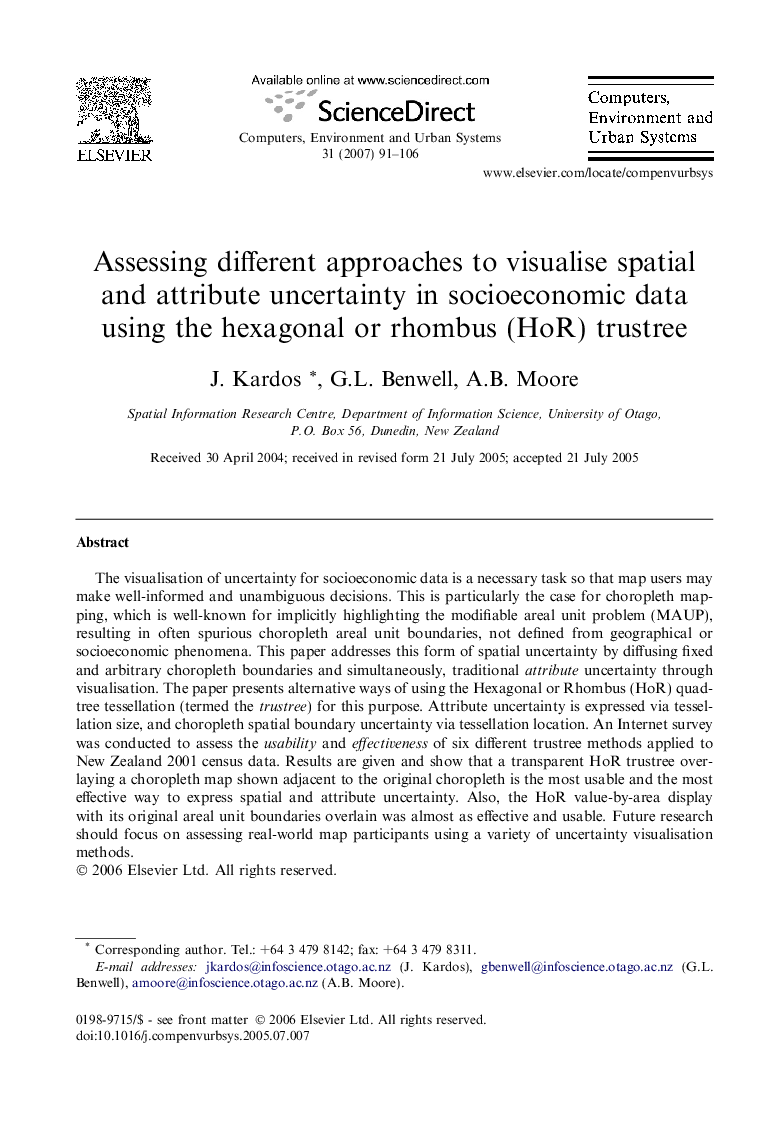| کد مقاله | کد نشریه | سال انتشار | مقاله انگلیسی | نسخه تمام متن |
|---|---|---|---|---|
| 506584 | 864925 | 2007 | 16 صفحه PDF | دانلود رایگان |

The visualisation of uncertainty for socioeconomic data is a necessary task so that map users may make well-informed and unambiguous decisions. This is particularly the case for choropleth mapping, which is well-known for implicitly highlighting the modifiable areal unit problem (MAUP), resulting in often spurious choropleth areal unit boundaries, not defined from geographical or socioeconomic phenomena. This paper addresses this form of spatial uncertainty by diffusing fixed and arbitrary choropleth boundaries and simultaneously, traditional attribute uncertainty through visualisation. The paper presents alternative ways of using the Hexagonal or Rhombus (HoR) quadtree tessellation (termed the trustree) for this purpose. Attribute uncertainty is expressed via tessellation size, and choropleth spatial boundary uncertainty via tessellation location. An Internet survey was conducted to assess the usability and effectiveness of six different trustree methods applied to New Zealand 2001 census data. Results are given and show that a transparent HoR trustree overlaying a choropleth map shown adjacent to the original choropleth is the most usable and the most effective way to express spatial and attribute uncertainty. Also, the HoR value-by-area display with its original areal unit boundaries overlain was almost as effective and usable. Future research should focus on assessing real-world map participants using a variety of uncertainty visualisation methods.
Journal: Computers, Environment and Urban Systems - Volume 31, Issue 1, January 2007, Pages 91–106